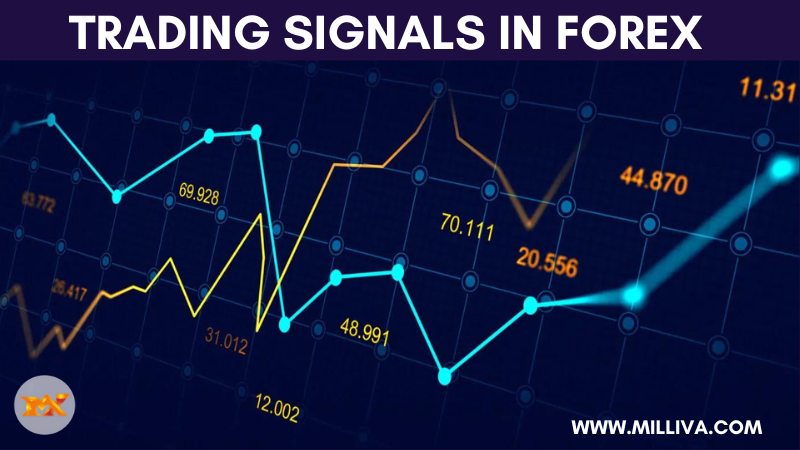Learn How To Read and Use Trading Signals In Forex

![]()
You’ll quickly learn that using all of the tools at your disposal pays off when you decide to get involved in FX trading. These tools ought to help you advance your trading approach, increase your output, and profitably produce more trades. Trading Signals In Forex are something that no active trader can truly afford to ignore because they have the potential to advance your forex trading efforts.
Signals are informational snippets that are sent electronically and can be accessed by email, SMS, text messages, and in certain cases, social media sites. This data frequently contains crucial market information that you must be aware of. A signal is, in many respects, a real-time update that you can use to inform your forex trading choices.
The Format of Trading Signals In Forex
Dedicated forex signals trading services frequently provide out forex signals. You will be given the option to implement signals manually or automatically through these services. In the late 2000s, automated signal trading really took off, and new traders were surely drawn to it. Going the automatic signal-trading path has the advantage of enforcing emotionless trading while also accelerating execution. The drawback is that by placing your trust in a product, procedure, or person, you essentially eliminate or at least greatly reduce your ability to make decisions.
Those with more advanced levels of forex trading experience frequently place a lot of emphasis on manual signal trading. This is because the trader retains final decision-making authority and the human intelligence aspect continues to be important. When you choose to manually trade forex signals, you do give up speed—and perhaps even efficiency—but for some, that’s a worthwhile trade-off for more control.
Types of Trading Signal Service
Although many signal services will have some overlapping qualifications, they are by no means universal. According to our personal observations, a signal service will typically adopt one of the following four shapes:
Unpaid or free signals, which typically result from a voluntary service.
Signals that have been paid for or acquired from a supplier and are delivered either through algorithmic or expert analysis.
Paid or acquired signals that will come from sources or systems of cumulative signals.
Signals from trading software that is installed on a trader’s computer, whether they are free or paid for; these signals are frequently referred to as either expert advisors or forex robots.
Four Types of Typical Signals
Given the wide variety of forex signals available, it is important to comprehend what each signal signifies. Any current or potential forex trader should memories the following four frequent signal types:
Action
Typically, this signal is a plain call to action that takes the shape of a direct “buy” or “sell” declaration. The best forex trading signals typically show a clear indication that the direction of price movement is about to change, giving traders the chance to enter or exit a position.
The following are common sources of “action” signals:
Moving Average
Simple Moving Average (SMA)
Bollinger Bands
Relative Strength Index (RSI)
Moving Average Convergence/Divergence (MACD)
Stop Loss
The stop-loss signal designates a point of exit and is intended to safeguard your investment. When the signal is automated, it will get you out of a trade before losses start to mount, detailed by a predefined price. While it is always advisable to set a stop-loss whenever you initiate a position, you can also decide to set trailing stop-losses as prices fluctuate, protecting some of your profit.
When placing a stop-loss, common signs to consider are:
RSI
Rate of Change
Stochastic Oscillators
Take Profit
Similar to a stop-loss signal, a take profit signal is activated when a profit level reaches a predetermined rate. When a currency pair reaches a given level, a take profit signal is typically used to initiate an automatic sell-off from a position.
Although alternative indications may occasionally be utilised to spot take profit opportunities, the signals used to set a stop-loss are frequently also useful for placing a take profit order. In this situation, you might want to utilise the following signals:
RSI
Stochastic Oscillators
Bollinger Bands
Fibonacci Retracement Levels
Moving Averages
Current Market Price
Not all signals function as an explicit call to action; some merely serve as informational alerts. You can compare the price of the currency pair at the time the signal was issued with the actual price at the time the order was submitted using a current market price (CMP) focused signal. The price of a selected currency pair may move toward lines of resistance, overbought circumstances, or other criteria that you may use to trigger an action, and traders should employ CMP signals to monitor any purchasing opportunities that may emerge.
The following indications are most frequently used with CMP signals:
RSI
Fibonacci Retracement Levels
Moving Averages
MACD
Bollinger Bands
Moving forward, it would be ideal to get a firm hold on a realistic signal to gain a deeper understanding of what it all means before you take the plunge and begin employing forex signals and forex signal trading services. While signals may be delivered to you in a variety of text and graphical formats, most providers should generally follow a similar format.
You might notice something like “Sell USD/CHF at CMP 0.9309 – SL 0.9334 – TP 0.9278,” for instance. If you dissect this signal, you’ll discover that the call to action is to “sell,” and the relevant pair is “USD/CHF.” The “CMP” is set at 0.9309, with 0.9334 set as the “stop-loss” level and 0.9278 as the “take profit” level.
As you can see, deciphering any signal you receive, despite its brevity and number-heavy nature, isn’t that difficult.
Things You Must Know Before Using Trading Signals
It’s simple to use a forex trading signal service. Before copying the data into your trading account, you simply sign up. This notion frequently leads some people to think that reading, using, and comprehending forex trading signals is a quick-fix method of trading. Simply said, this is untrue. Reading a straightforward signal can provide you with a concise instruction, but it does not eliminate any of the risks involved in a trade.

You should Be Aware of the Following Before Choosing to Employ a Forex Signal Service
Recognize the Variations Among Forex Signal Services
The quality of different forex signal trading services varies greatly; no two are same. Given the abundance of “dud” systems, success rates for signal services range from the high 60% range to something far lower. Avoid reading each forex trading signal service the same; instead, understand what you’re getting into before you sign up.
Know How Much Danger you can Take
Forex trading involves risks because of its degree of volatility and leverage. Consequently, it is possible to lose a lot of money quickly. Popular trending pairs, like the XAU/USD, are prone to extreme fluctuations. Therefore, you must ascertain your comfort level with the associated risk level before interpreting any forex indication that you receive.
Recognize the Market Circumstances
A forex signal will often offer objective advise. This is not a justification, though, for failing to comprehend the market in front of you. Before acting on a forex signal, familiarize yourself with the market’s constraints and present conditions.
What benefits and drawbacks come with relying on forex trading signals?
Traders are searching for the greatest information that would enable them to predict price moves before they occur in a quick-paced, always changing market like forex. This is precisely why forex trading signals are utilized, however no outcomes can ever be guaranteed, and your personal trading approach will have an impact on the amount of money you may make using these signals.
Here are some of the main benefits and drawbacks of employing these signals to direct your trade.
Advantages
Each Trader can Develop a Unique Strategy For Utilizing Signals that Suits their Needs
Every trader follows a distinct schedule for establishing and closing trades and may feel differently comfortable when calculating risk/reward ratios. Additionally, a lot of traders decide on a particular trading method based on their prior performance and comfort level with particular signals. In this aspect, forex trading signals can help your chosen trading approach.
Trading Signals Can Be Followed in a Variety of Ways
Traders can utilise signals to keep an eye out for trading chances even when they aren’t actively tracking a particular forex chart. These signals can range from subscription-based services to automated alerts by email, SMS, or other communication channels.
Based on a Variety of Chart Data, Trading Signals Can Provide Trading Insights And Recommendations
Forex traders can utilise signals to assess opportunities from several angles, from historical data to trading volume and price movement. As a result, a trader may feel more confident about their trading choices.
Disadvantages
The Science of Signals is not Precise
Although the majority of serious forex traders use trading signals to help them make decisions, there is considerable debate regarding which signals—and which groupings of signals—deliver the highest results. Since there is no assurance that the method will be profitable in the short or long term, traders must develop a system for employing signals that works for them.
False Signals Provide an Ongoing Danger
False signals are a continual concern with every indication, even when you’re employing many signals to confirm trends and validate your strategy. Because traders must constantly approach trade execution with caution, no genuine trader invests a sizable portion of their trading capital in a single position.
“Analysis Paralysis” Can Strike Traders Who Rely Too Much on Forex Signals
By trying to take into consideration too many factors when conducting thorough research and removing risk from your transactions, you may end up undermining your own capacity for critical thought and decision-making.

Visit Us On: www.milliva.com





